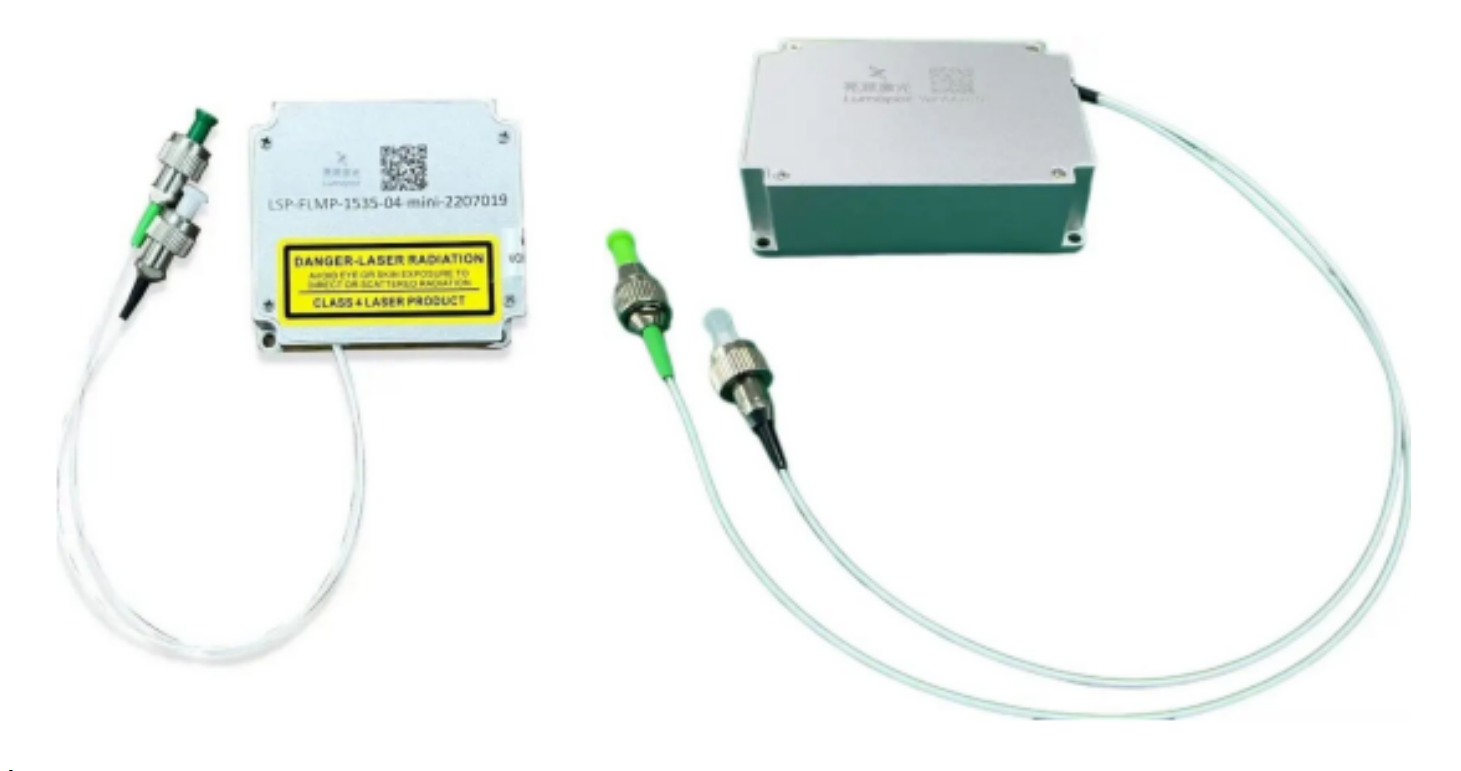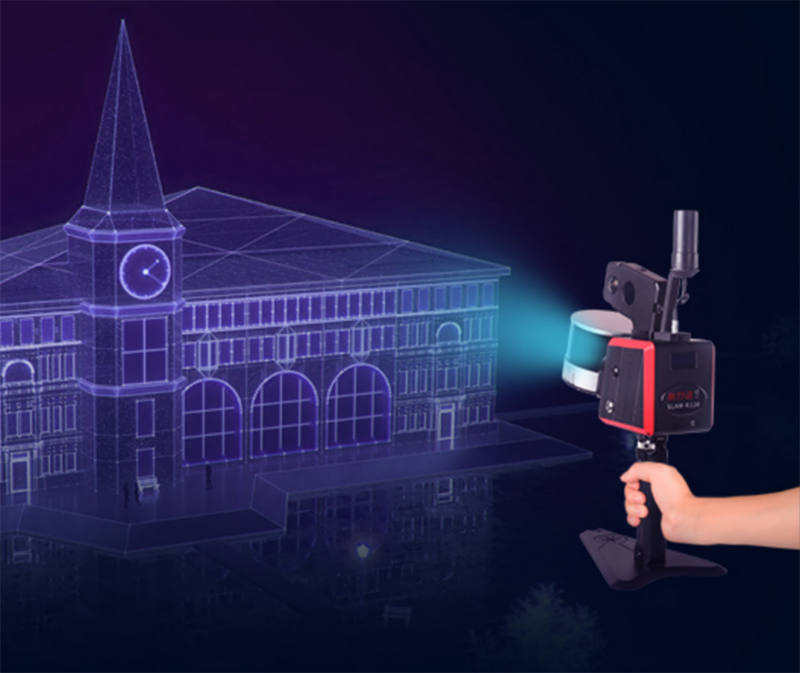In the wave of upgrading the surveying and mapping geographic information industry towards efficiency and precision, 1.5 μ m fiber lasers are becoming the core driving force for market growth in the two major fields of unmanned aerial vehicle surveying and handheld surveying, thanks to their deep adaptation to scene requirements. With the explosive growth of applications such as low altitude surveying and emergency mapping using drones, as well as the iteration of handheld scanning devices towards high precision and portability, the global market size of 1.5 μ m fiber lasers for surveying has exceeded 1.2 billion yuan by 2024, with demand for unmanned aerial vehicles and handheld devices accounting for over 60% of the total, and maintaining an average annual growth rate of 8.2%. Behind this demand boom is the perfect resonance between the unique performance of the 1.5 μ m band and the stringent requirements for accuracy, safety, and environmental adaptability in surveying scenarios.

1、 Product Overview
The "1.5um Fiber Laser Series" of Lumispot adopts MOPA amplification technology, which has high peak power and electro-optical conversion efficiency, low ASE and nonlinear effect noise ratio, and a wide working temperature range, making it suitable for use as a LiDAR laser emission source. In surveying systems such as LiDAR and LiDAR, a 1.5 μ m fiber laser is used as the core emitting light source, and its performance indicators directly determine the "accuracy" and "breadth" of detection. The performance of these two dimensions is directly related to the efficiency and reliability of unmanned aerial vehicles in terrain surveying, target recognition, power line patrol and other scenarios. From the perspective of physical transmission laws and signal processing logic, the three core indicators of peak power, pulse width, and wavelength stability are key variables that affect detection accuracy and range. Their mechanism of action can be decomposed through the entire chain of "signal transmission atmospheric transmission target reflection signal reception".
2、 Application Fields
In the field of unmanned aerial surveying and mapping, the demand for 1.5 μ m fiber lasers has exploded due to their precise resolution of pain points in aerial operations. The unmanned aerial vehicle platform has strict limitations on the volume, weight, and energy consumption of the payload, while the compact structural design and lightweight characteristics of the 1.5 μ m fiber laser can compress the weight of the laser radar system to one-third of traditional equipment, perfectly adapting to various types of unmanned aerial vehicle models such as multi rotor and fixed wing. More importantly, this band is located in the "golden window" of atmospheric transmission. Compared with the commonly used 905nm laser, its transmission attenuation is reduced by more than 40% under complex meteorological conditions such as haze and dust. With a peak power of up to kW, it can achieve a detection distance of more than 250 meters for targets with a reflectivity of 10%, solving the problem of "unclear visibility and distance measurement" for unmanned aerial vehicles during surveys in mountainous areas, deserts and other regions. At the same time, its excellent human eye safety features - allowing peak power more than 10 times that of 905nm laser - enable drones to operate at low altitudes without the need for additional safety shielding devices, greatly improving the safety and flexibility of manned areas such as urban surveying and agricultural mapping.

In the field of handheld surveying and mapping, the increasing demand for 1.5 μ m fiber lasers is closely related to the core demands of device portability and high precision. Modern handheld surveying equipment needs to balance adaptability to complex scenes and ease of operation. The low noise output and high beam quality of 1.5 μ m fiber lasers enable handheld scanners to achieve micrometer level measurement accuracy, meeting high-precision requirements such as cultural relic digitization and industrial component detection. Compared with traditional 1.064 μ m lasers, its anti-interference ability is significantly improved in outdoor strong light environments. Combined with non-contact measurement characteristics, it can quickly obtain three-dimensional point cloud data in scenarios such as ancient building restoration and emergency rescue sites, without the need for target preprocessing. What is more noteworthy is that its compact packaging design can be integrated into handheld devices weighing less than 500 grams, with a wide temperature range of -30 ℃ to+60 ℃, perfectly adapting to the needs of multi scenario operations such as field surveys and workshop inspections.

From the perspective of its core role, 1.5 μ m fiber lasers have become a key device for reshaping surveying capabilities. In unmanned aerial vehicle surveying, it serves as the "heart" of the laser radar, achieving centimeter level ranging accuracy through nanosecond pulse output, providing high-density point cloud data for terrain 3D modeling and power line foreign object detection, and improving the efficiency of unmanned aerial vehicle surveying by more than three times compared to traditional methods; In the context of national land survey, its long-range detection capability can achieve efficient surveying of 10 square kilometers per flight, with data errors controlled within 5 centimeters. In the field of handheld surveying, it empowers devices to achieve a "scan and get" operational experience: in cultural heritage protection, it can accurately capture the surface texture details of cultural relics and provide millimeter level 3D models for digital archiving; In reverse engineering, geometric data of complex components can be quickly obtained, accelerating product design iterations; In emergency surveying and mapping, with real-time data processing capabilities, a three-dimensional model of the affected area can be generated within one hour after earthquakes, floods, and other disasters occur, providing critical support for rescue decision-making. From large-scale aerial surveys to precise ground scanning, the 1.5 μ m fiber laser is driving the surveying industry into a new era of "high precision+high efficiency".
3、 Core advantages
The essence of the detection range is the farthest distance at which the photons emitted by the laser can overcome atmospheric attenuation and target reflection loss, and still be captured by the receiving end as effective signals. The following indicators of the bright source laser 1.5 μ m fiber laser directly dominate this process:
① Peak power (kW): standard 3kW@3ns &100kHz; Upgraded product 8kW@3ns &100kHz is the "core driving force" of the detection range, representing the instantaneous energy released by the laser within a single pulse, and is the key factor determining the strength of long-distance signals. In drone detection, photons need to travel hundreds or even thousands of meters through the atmosphere, which can cause attenuation due to Rayleigh scattering and aerosol absorption (although the 1.5 μ m band belongs to the "atmospheric window", there is still inherent attenuation). At the same time, target surface reflectivity (such as differences in vegetation, metals, and rocks) can also lead to signal loss. When the peak power is increased, even after long-distance attenuation and reflection loss, the number of photons reaching the receiving end can still meet the "signal-to-noise ratio threshold", thereby extending the detection range - for example, by increasing the peak power of a 1.5 μ m fiber laser from 1kW to 5kW, under the same atmospheric conditions, the detection range of 10% reflectivity targets can be extended from 200 meters to 350 meters, directly solving the pain point of "not being able to measure far" in large-scale survey scenarios such as mountainous areas and deserts for drones.
② Pulse width (ns): adjustable from 1 to 10ns. The standard product has a full temperature (-40~85 ℃) pulse width temperature drift of ≤ 0.5ns; further, it can reach a full temperature (-40~85 ℃) pulse width temperature drift of ≤ 0.2ns. This indicator is the "time scale" of distance accuracy, representing the duration of laser pulses. The distance calculation principle for drone detection is "distance=(light speed x pulse round-trip time)/2", so the pulse width directly determines the "time measurement accuracy". When the pulse width is reduced, the "time sharpness" of the pulse increases, and the timing error between the "pulse emission time" and the "reflected pulse reception time" at the receiving end will be significantly reduced.
③ Wavelength stability: within 1pm/℃, the line width at full temperature of 0.128nm is the "accuracy anchor" under environmental interference, and the fluctuation range of laser output wavelength with temperature and voltage changes. The detection system in the 1.5 μ m wavelength band usually uses "wavelength diversity reception" or "interferometry" technology to improve accuracy, and wavelength fluctuations can directly cause measurement benchmark deviation - for example, when a drone is working at high altitude, the ambient temperature may rise from -10 ℃ to 30 ℃. If the wavelength temperature coefficient of the 1.5 μ m fiber laser is 5pm/℃, the wavelength will fluctuate by 200pm, and the corresponding distance measurement error will increase by 0.3 millimeters (derived from the correlation formula between wavelength and light speed). Especially in unmanned aerial vehicle power line patrol, precise parameters such as wire sag and inter line distance need to be measured. Unstable wavelength can lead to data deviation and affect line safety assessment; The 1.5 μ m laser using wavelength locking technology can control wavelength stability within 1pm/℃, ensuring centimeter level detection accuracy even when temperature changes occur.
④ Indicator synergy: The "balancer" between accuracy and range in actual drone detection scenarios, where indicators do not act independently, but rather have a collaborative or restrictive relationship. For example, increasing peak power can extend the detection range, but it is necessary to control the pulse width to avoid a decrease in accuracy (a balance of "high power+narrow pulse" needs to be achieved through pulse compression technology); Optimizing beam quality can simultaneously improve range and accuracy (beam concentration reduces energy waste and measurement interference caused by overlapping light spots at long distances). The advantage of a 1.5 μ m fiber laser lies in its ability to achieve synergistic optimization of "high peak power (1-10 kW), narrow pulse width (1-10 ns), high beam quality (M ²<1.5), and high wavelength stability (<1pm/℃)" through the low loss characteristics of fiber media and pulse modulation technology. This achieves a dual breakthrough of "long distance (300-500 meters)+high precision (centimeter level)" in unmanned aerial vehicle detection, which is also its core competitiveness in replacing traditional 905nm and 1064nm lasers in unmanned aerial vehicle surveying, emergency rescue and other scenarios.
Customizable
✅ Fixed pulse width&pulse width temperature drift requirements
✅ Output type&output branch
✅ Reference light branch splitting ratio
✅ Average power stability
✅ Localization demand
Post time: Oct-28-2025
